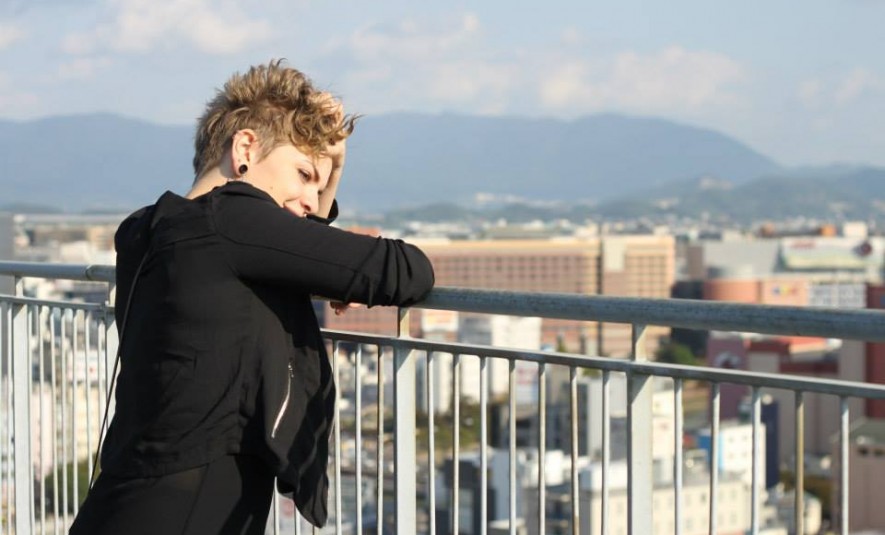On our trip to Kansai, we decided that the first day would be all about Nara! Though Kyoto is internationally known as the temple city and representative of ancient Japan, Nara too carries a long history even older than Kyoto. In the Nara-period (AD 710-794) Nara was the Capital of Japan, centered around the Heijo Palace in Nara city. When the period ended, the capital was moved to Kyoto and the Heian Palace, where it would remain the capital until 1600, when the capital was relocated to the home of the Shogun in Edo (modern-day Tokyo). Nara still has many small towns with ancient style street structures and buildings, and are home to some of Japan’s oldest templesites. On our trip, however, we first decided to visit Kashihara-jingu*, because I had read online that the town around was home to some very ancient streets of Japan. When we arrived in Kashihara city it very quickly became clear that I must have misread the information. The town was very new in it’s construction, oh, and dead still. We were probably the first turist in the entire season, and of course me being probably the only foreigner in miles around. However, having traveled by train for nearly half an hour, we decided that we were definitely going to see the jingu. And fortunately for us, it turned out to be better than the appearance of the town could promise.
The Kashihara-jingu was constructed in 1889, making it a relatively new Shinto-shrine. However, it was constructed on what is said to be the sight where Japan’s first Emperor, Emperor Jimmu acceded to the throne. The Shrine is surrounded by a huge park, that also contains a lake and Torii walk. Toriis are gates, usually situated at Shinto-shrines symbolizing that one is about to enter a sacred place. My friend told me that toriis also hinder evil and impure from entering the temple grounds, which made her always feel that all her misdeeds and mishaps where being bared whenever she stood in front of a Torii-gate**. After the jingu, we continued our trip to former royalties’ recidents, and once again hopped on the train, this time towards the Heijo Palace, Nara-park and the Daibutsu (big buddah). The palace was unfortunately a reconstruction, but just seeing the scale of the palaceground and the view the emperor must have enjoyed was enough to understand ancient Japanese’s way of thinking. From the palace, facing east, one could see and endless stretching sky touching fields, blue mountains, rivers and all of the land of the rising sun. No wonder the Emperor decided to live there!
Afterwards the bus took us to all the tourist-sites in Nara, the most expected one being Nara-park, where we were looking forward to playing with the deers! (Yes, forget all about ancient emperors, sacred temples and holy sitings – there are deers everywhere! <3). Because of the many deers that walk around freely around the park and temple area in Nara city, the local mascot for Nara has become Sento-kun, a Buddah with antlers on his forehead (apparently this raised much anger with buddhist around the world). However, we quickly got tired of the many deers and endless lines of Korean couples feeding them crackers, so we moved up the road towards Todai-ji and the Nara Daibutsu, part of UNESCO’s World Heritage site. Boy was that a big buddah! Inside the temple there was also a pillar with a whole, which is said to bring fortune to those who can fit through it – so Junior High school students on field trip all wormed their way through the tiny hole.
We ended the day back in Kyoto, where we accidentally stumbled upon a small bar in a narrow alley. We ended up drinking with company bosses and their employees, singing Karaoke until 2 in the morning with two younger guys, and thanks to me, a two hour long walk back to the hotel accompanied by tears, laughter, singing and complaining because I was to drunk to read the map on my iPhone – and still drunk when I woke up the next morning. Indeed a good ending to the first day in Kansai! Kampai!

*jingu (rather than the most commonly used jinjya meaning “shrine”) is used to denote larger Shinto-shrines, the most famous being the Ise-jingu
**she also told me that a river in Osaka experienced a lot of pollution and dumping of trash by locals for years, and that the dumping only stopped when a local farmer decided to put hundreds of small toriis alongside the riverbend. The symbolism of the toriis was strong enough to make people scared of throwing trash in the river











